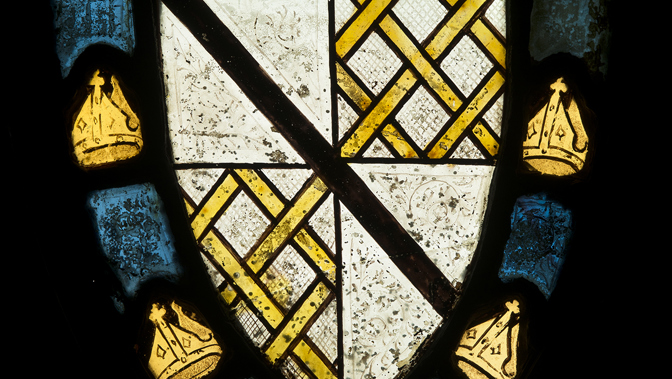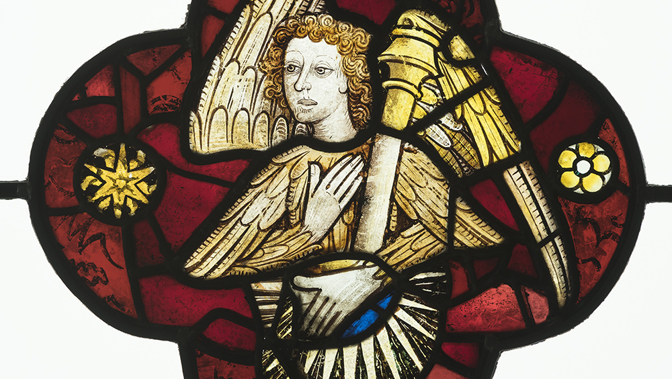Koberger Bible with Ed Johnson
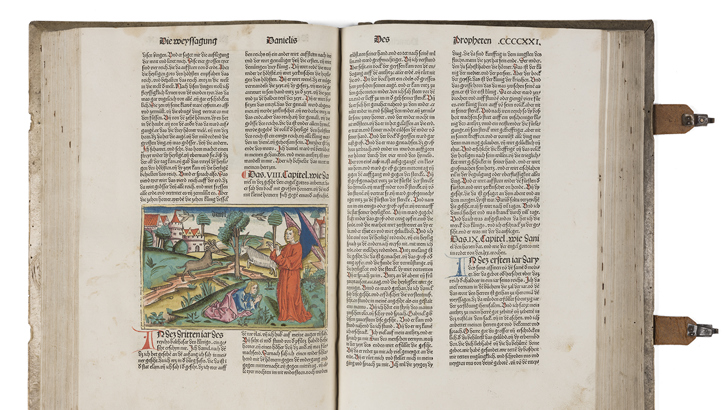
Curator of Medieval and Renaissance Art, Ed Johnson shares some insights on his recent research into this magnificent early printed Bible.
Incunabula is a Latin term applied to the earliest of European printed texts, published within the first 50 years of European movable-type printing. This printing technique was introduced into Europe by Joannes Guttenberg in the mid-1400s. The Burrell Collection contains a handful of Incunabula, including the impressive and influential Koberger Bible.
Bound in 16th-century pigskin leather over wooden boards, this early printed Bible was published in Nuremberg, Germany, on 17 February 1483, by Anton Koberger (about 1440–1513). It is regarded as one of the finest and most influential of the German Bibles before the translation of the religious reformer Martin Luther (1483–1546) in the 1500s.
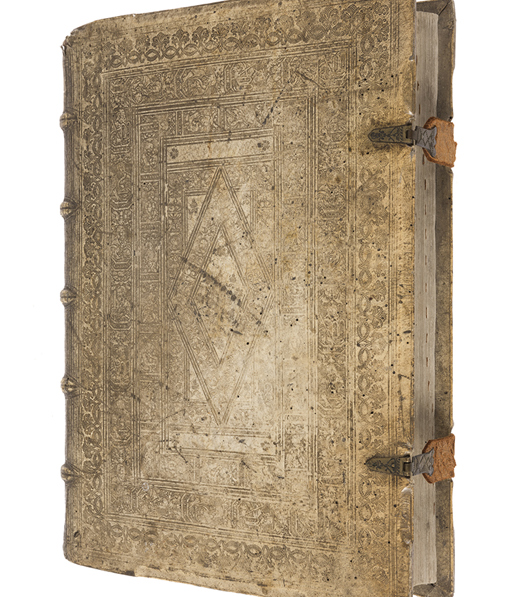
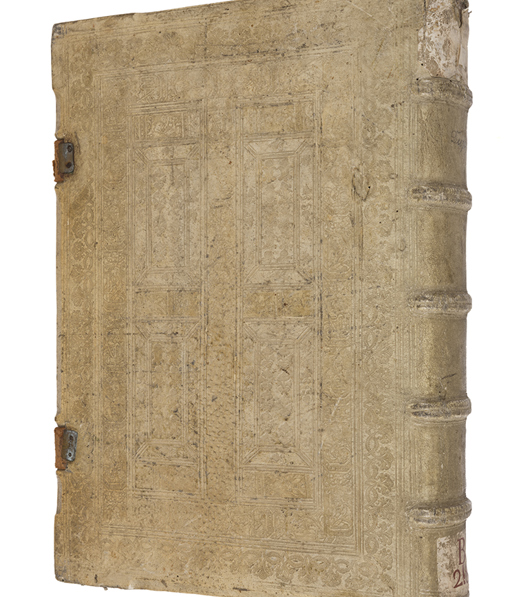
The Koberger Bible contains some 109 woodcut illustrations by the so-called ‘Master of Cologne’. Originally cut for two earlier Bibles, these woodcuts first appear in Heinrich Quentell and Bartholomaeus of Unkel’s Bibles of 1478–79, which were printed in Cologne in two differing dialects of Low German. It is believed that Koberger may have partially financed the Cologne venture, perhaps on the understanding that the woodcuts could be reproduced in his later Bible, which was printed in the High German dialect. The woodcuts were of such quality that they were usable well into the 1500s, being used to illustrate the Halberstadt Bible of 1522.
Often printed across two columns of text, the illustrations are larger than those seen in preceding Bibles, and their prominence, size and quality greatly influenced the composition of later bibles and secular texts. The illustrations of the Apocalypse directly inspired a celebrated 1498 series of woodcuts by Koberger’s godson, the artist Albrecht Dürer. The crisp and clear typesetting is said to represent two new German typefaces specially commissioned by Koberger to print this work.

Produced in an estimated print run of 1,000–1,500, the Koberger Bible was issued in three versions, one containing uncoloured woodcuts, another sparsely hand coloured in a limited palette, and a final ‘deluxe’ edition, such as this copy, which is hand finished with more elaborately vivid colours and illuminated initials.
Koberger, who began his career as a goldsmith, was the most successful printer and publisher of his day, printing around 200–250 early books, including the famous Nuremberg Chronicle (see 4.5). Koberger is said to have operated 24 presses a day, and employed over 100 workmen, including compositors, pressmen, illuminators, bookbinders and travelling salesmen. He also owned two papermills, and had branches all over Europe, in places such as Paris, Venice, Vienna and Krakow.
Evidence suggests that in the 16th century this book belonged to the Carthusian Abbey of Saint Maria, Buxheim, Memmingen, Germany. The Buxheim Charterhouse housed an impressive library, which by 1600 is said to have held over 700 printed books and 500 manuscripts. It benefitted from a significant donation by Hilprand Brandenburg of Biberach (1442–1514). The monastery was suppressed in 1803, and the collection dispersed at auction in 1883.
Ed Johnson
Curator of Medieval and Renaissance Art
Glasgow Museums

